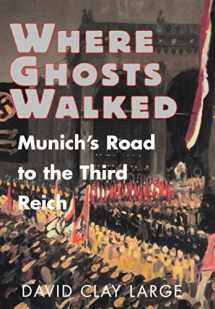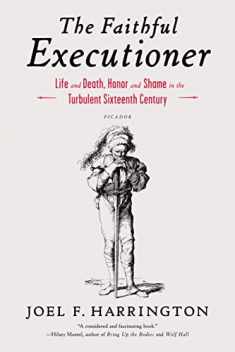
Where Ghosts Walked: Munich's Road to the Third Reich
ISBN-13:
9780393038361
ISBN-10:
039303836X
Edition:
1
Author:
David Clay Large
Publication date:
1997
Publisher:
W. W. Norton & Company
Format:
Hardcover
406 pages
Category:
Germany
,
European History
FREE US shipping
Rent
35 days
Due Jun 08, 2024
35 days
from $32.45
USD
Book details
ISBN-13:
9780393038361
ISBN-10:
039303836X
Edition:
1
Author:
David Clay Large
Publication date:
1997
Publisher:
W. W. Norton & Company
Format:
Hardcover
406 pages
Category:
Germany
,
European History
Summary
Where Ghosts Walked: Munich's Road to the Third Reich (ISBN-13: 9780393038361 and ISBN-10: 039303836X), written by authors
David Clay Large, was published by W. W. Norton & Company in 1997.
With an overall rating of 3.6 stars, it's a notable title among other
Germany
(European History) books. You can easily purchase or rent Where Ghosts Walked: Munich's Road to the Third Reich (Hardcover) from BooksRun,
along with many other new and used
Germany
books
and textbooks.
And, if you're looking to sell your copy, our current buyback offer is $0.3.
Description
The capital of the Nazi movement was not Berlin but Munich, according to Hitler himself. In examining why, historian David Clay Large begins in Munich four decades before World War I and finds a proto-fascist cultural heritage that proved fertile soil later for Hitler's movement. An engrossing account of the time and place that launched Hitler on the road to power.
Munich was the birthplace of Nazism and became the chief cultural shrine of the Third Reich. In exploring the question of why Nazism flourished in the 'Athens of the Isar', David Clay Large has written a compelling account of the cultural roots of the Nazi movement, allowing us to see that the conventional explanations for the movement's rise are not enough. Large's account begins in Munich's 'golden age', four decades before World War I, when the city's artists and writers produced some of the outstanding work of the modernist spirit. He sees a dark side to the city, a protofascist cultural heritage that would tie Adolf Hitler's movement to its soul. Large prowls his volatile world of seamy basement meeting places, finding that attacks on modernity and liberalism flourished, along with virulent anti-Semitism and German nationalism. From the violent experience of the Munich Soviet, through Hitler's failed Beer-Hall Putsch of 1923 and on to his appointment as German chancellor in 1933, Large unfurls a narrative full of insight and implication.

We would LOVE it if you could help us and other readers by reviewing the book
Book review

Congratulations! We have received your book review.
{user}
{createdAt}
by {truncated_author}




